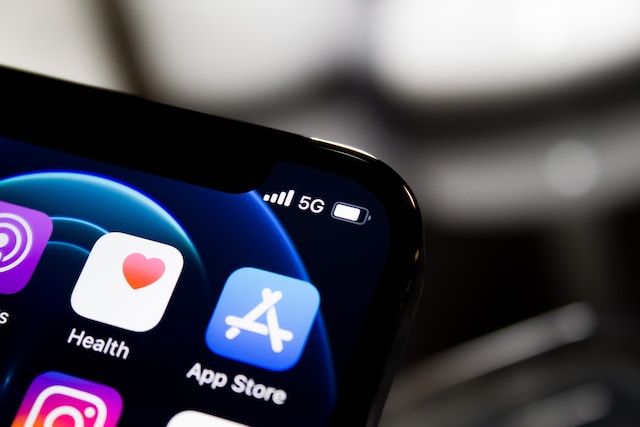Exploring the Impact of 5G Technology on Mobile Innovation
5G technology revolutionizes mobile innovation, unlocking unprecedented possibilities and transforming industries. It offers lightning-fast speeds, low latency, and massive connectivity, revolutionizing mobile device interaction and presenting great potential for the future.
1. Introduction to 5G Technology
5G, the fifth generation of wireless technology, revolutionizes mobile communication with faster speeds, higher capacity, and ultra-low latency, enabling diverse applications and services.
2. The Advantages of 5G over Previous Generations
Compared to its predecessors, 5G offers several distinct advantages. It provides significantly faster data transfer speeds, allowing seamless streaming, quick downloads, and smooth browsing experiences. Additionally, 5G networks have lower latency, reducing delays and enabling real-time interactions.
3. Faster Speeds and Lower Latency
5G offers fast download speeds, enabling ultra-high definition video streaming, instant file transfers, and lag-free online gaming. Its lower latency ensures near-instantaneous response times, enabling real-time interactivity in applications.
4. Enhanced Connectivity and Capacity
5G technology significantly increases mobile network capacity, supporting a large number of connected devices simultaneously. Ideal for IoT-driven environments, enabling smart cities, connected infrastructure, and seamless communication.
5. Enabling Internet of Things (IoT) Applications
5G’s robust connectivity enables IoT ecosystem integration, promoting innovations in sectors like healthcare, transportation, manufacturing, and agriculture.
6. Empowering Mobile Innovations
5G technology drives mobile innovation by enabling developers and entrepreneurs to create and deploy advanced applications and services. Its high-speed, low-latency nature opens doors to advancements in AR, VR, cloud gaming, and AI.
7. Use Cases of 5G in Various Industries
The impact of 5G extends across numerous industries, revolutionizing processes, services, and experiences. Some notable use cases include:
7.1 Augmented Reality (AR) and Virtual Reality (VR)
5G’s low latency and high bandwidth enable seamless AR/VR experiences. From immersive gaming and interactive shopping to remote collaboration and virtual training, 5G unlocks new dimensions for AR and VR applications.
7.2 Smart Cities and Connected Infrastructure
5G enables smart city initiatives by providing connectivity for intelligent transportation, energy management, public safety, real-time monitoring, data analysis, and automated decision-making in urban environments.
7.3 Telemedicine and Remote Healthcare
5G improves healthcare by enabling remote diagnosis, robotic surgery, and real-time consultations, enhancing access and improving patient outcomes in remote areas.
7.4 Autonomous Vehicles and Transportation
5G enhances autonomous vehicle development through real-time communication, improving road safety, traffic management, and efficiency.
8. Augmented Reality (AR) and Virtual Reality (VR)
The low latency and high bandwidth of 5G enable seamless AR/VR experiences. From immersive gaming and interactive shopping to remote collaboration and virtual training, 5G unlocks new dimensions for AR and VR applications.
9. Smart Cities and Connected Infrastructure
5G enables smart city initiatives by providing connectivity for intelligent transportation, energy management, public safety, real-time monitoring, data analysis, and automated decision-making in urban environments.
10. Telemedicine and Remote Healthcare
5G improves healthcare by enabling remote diagnosis, robotic surgery, and real-time consultations, enhancing access and improving patient outcomes in remote areas.
11. Autonomous Vehicles and Transportation
5G improves road safety, traffic management, and efficiency by enabling real-time communication between vehicles, infrastructure, and pedestrians in self-driving cars.
12. 5G and Edge Computing
5G and edge computing enable real-time processing and low latency in remote robotics, augmented reality, and industrial automation applications, reducing latency and enabling real-time processing.
13. Challenges and Considerations of 5G Implementation
While 5G brings immense opportunities, its implementation poses challenges. Some considerations include the need for significant infrastructure upgrades, spectrum availability, cybersecurity concerns, and ensuring equitable access to 5G networks.
14. Security and Privacy Concerns
As the dependence on 5G technology grows, security and privacy become critical considerations. Maintaining trust and utilizing 5G’s full potential requires protecting user data, securing network infrastructure, and addressing vulnerabilities.
15. Conclusion
5G technology enhances mobile innovation with faster speeds, lower latency, and enhanced connectivity. It may revolutionize healthcare and user experience, potentially influencing the Internet of Things (IoT) in healthcare.
FAQs – Frequently Asked Questions
Q: What is 5G technology?
A: 5G technology revolutionizes wireless communication with faster speeds, lower latency, and enhanced connectivity.
Q: How does 5G technology impact mobile innovation?
A: With faster speeds, reduced latency, and larger connections, 5G technology revolutionizes mobile innovation, allowing improvements in augmented reality, virtual reality, IoT, and autonomous cars.
Q: What are the advantages of 5G over previous generations?
A: 5G supports several connected devices and provides quicker data transfer, lower latency, and more capacity.
Q: How does 5G technology enable augmented reality (AR) and virtual reality (VR) experiences?
A: Because of 5G’s low latency and high bandwidth, it allows for seamless AR and VR experiences, including interactive gaming, commerce, remote collaboration, and virtual training.
Q: In which industries are 5G making a significant impact?
A: By changing processes, services, and experiences, 5G transforms industries such as healthcare, transportation, manufacturing, education, retail, and entertainment.
Q: What are some use cases of 5G technology?
A: Applications of 5G technology include augmented reality, virtual reality, smart cities, telemedicine, driverless cars, and edge computing.
Q: What are the challenges of implementing 5G technology?
A: Challenges of implementing 5G technology include infrastructure upgrades, spectrum availability, cybersecurity concerns, and ensuring equitable access to 5G networks.
Q: What security and privacy considerations are associated with 5G technology?
A: Security and privacy considerations for 5G technology involve protecting user data, securing network infrastructure, and addressing vulnerabilities to maintain trust and privacy.
Q: How does 5G technology contribute to edge computing?
A: The combination of 5G and edge computing reduces latency by bringing computing power closer to the data source. Synergy enables real-time processing in remote robotics, augmented reality, and industrial automation.
Q: What is the future of 5G technology?
A: IoT, AI, linked gadgets, smart cities, and revolutionary experiences across sectors are all possible with 5G technology.


